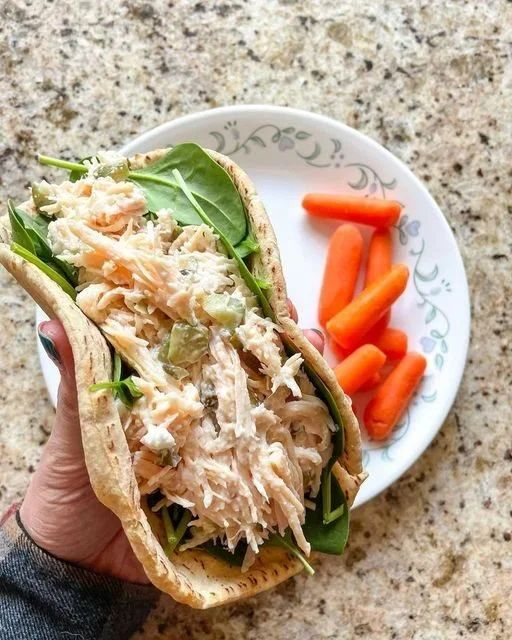Title: The Art of Mindful Eating: Nourishing Body and Soul
Introduction: In today’s fast-paced world, the simple act of eating has become rushed and mindless for many people. However, practicing mindful eating offers an opportunity to slow down, savor each bite, and cultivate a deeper connection with our food. It’s not just about what we eat, but how we eat it—paying attention to the flavors, textures, and sensations that arise with each mouthful. By embracing mindful eating, we can nourish both our bodies and souls, fostering a greater appreciation for the food we consume and the moments we share around the table.
The Practice of Mindful Eating: Mindful eating is rooted in the principles of mindfulness—a practice that involves bringing our full attention to the present moment without judgment. When applied to eating, mindfulness encourages us to engage all our senses and tune into the experience of eating with curiosity and awareness. This means noticing the colors, smells, and textures of our food, as well as the sensations of hunger, fullness, and satisfaction that arise as we eat. By slowing down and savoring each bite, we can fully appreciate the nourishment that food provides and develop a more intuitive relationship with eating.
Benefits of Mindful Eating: Practicing mindful eating offers a wide range of benefits for both physical and emotional well-being. By savoring our food and paying attention to hunger and fullness cues, we’re better able to regulate our eating habits and maintain a healthy weight. Mindful eating also promotes greater enjoyment of food, as we become more attuned to the flavors and textures that make each meal unique. Additionally, mindful eating can help reduce stress and emotional eating by encouraging a non-judgmental attitude toward food and eating habits.
Incorporating Mindful Eating into Daily Life: Incorporating mindful eating into our daily lives doesn’t have to be complicated. Start by setting aside dedicated time for meals, free from distractions like phones, computers, or television. Take a few deep breaths before eating to center yourself and bring your attention to the present moment. As you eat, chew slowly and deliberately, focusing on the flavors and sensations of each bite. Pause occasionally to check in with your body and assess your level of hunger and fullness. And most importantly, approach eating with a sense of curiosity, openness, and gratitude for the nourishment it provides.
Conclusion: Mindful eating is not a diet or a set of strict rules—it’s a way of approaching food and eating with intention, awareness, and compassion. By practicing mindful eating, we can transform our relationship with food from one of mindless consumption to one of conscious nourishment. So take a moment to slow down, savor the flavors, and fully experience the joy of eating. Your body and soul will thank you for it.
Weight Watchers Zero Point Dill Pickle Chicken Salad

Weight Watchers Zero Point Dill Pickle Chicken Salad Recipe
Ingredients:
- 2 cups cooked chicken breast, shredded or diced
- 1/2 cup non-fat Greek yogurt
- 1/4 cup chopped dill pickles
- 2 tablespoons chopped fresh dill (or 1 tablespoon dried dill)
- 1 tablespoon Dijon mustard
- 1 tablespoon lemon juice
- 1/4 teaspoon garlic powder
- Salt and pepper to taste
- Optional: Chopped celery, red onion, or bell pepper for added crunch and flavor
Instructions:
- Prepare the Chicken: If you haven’t already, cook the chicken breast by boiling, baking, grilling, or using any preferred method. Once cooked, let it cool slightly, then shred or dice it into bite-sized pieces.
- Mix Dressing: In a large mixing bowl, combine the non-fat Greek yogurt, chopped dill pickles, chopped fresh dill (or dried dill), Dijon mustard, lemon juice, garlic powder, salt, and pepper. Stir until all the ingredients are well combined and the dressing is smooth.
- Combine Ingredients: Add the cooked chicken breast to the bowl with the dressing. If using additional vegetables like celery, red onion, or bell pepper, add them to the bowl as well. Gently toss everything together until the chicken is evenly coated with the dressing and the vegetables are distributed throughout.
- Adjust Seasoning: Taste the chicken salad and adjust the seasoning if needed, adding more salt, pepper, or lemon juice according to your preferences.
- Chill and Serve: Cover the bowl with plastic wrap or transfer the chicken salad to an airtight container. Refrigerate for at least 30 minutes to allow the flavors to meld together and the salad to chill.
- Enjoy: Once chilled, serve the Weight Watchers Zero Point Dill Pickle Chicken Salad cold as a delicious and satisfying meal or snack. Enjoy it on its own, as a sandwich filling, or on top of a bed of mixed greens. Store any leftovers in the refrigerator for up to 3-4 days.
Note: This chicken salad is zero points on the Weight Watchers Freestyle program, making it a healthy and satisfying option for those following the plan. Feel free to customize the recipe by adding other ingredients such as chopped hard-boiled eggs, diced apples, or sliced grapes for added flavor and texture.
